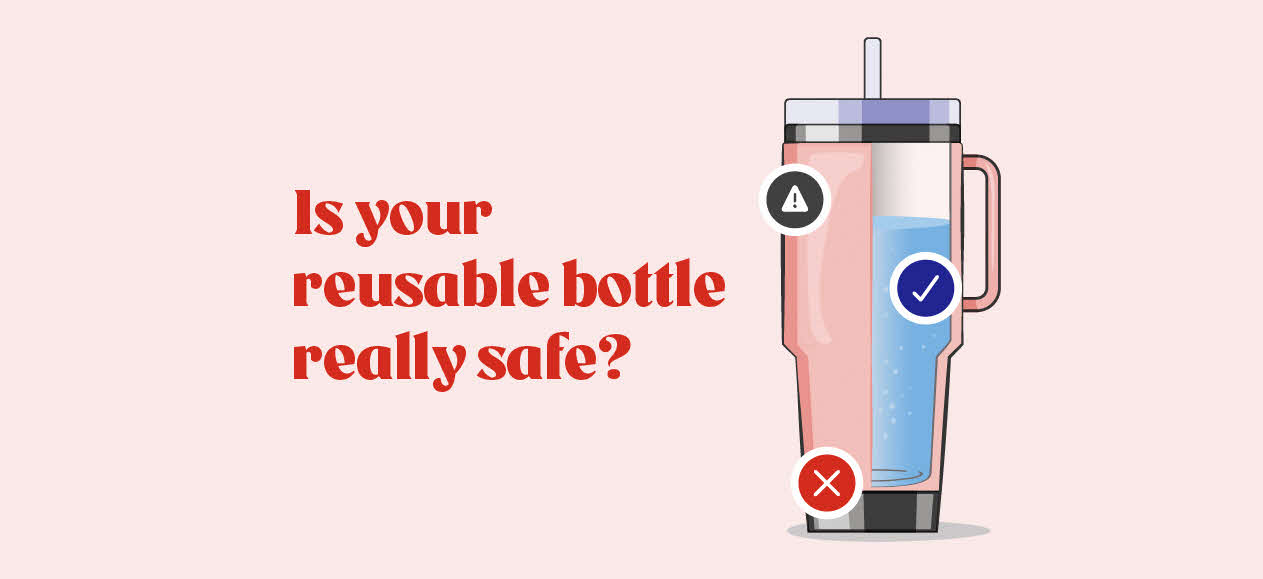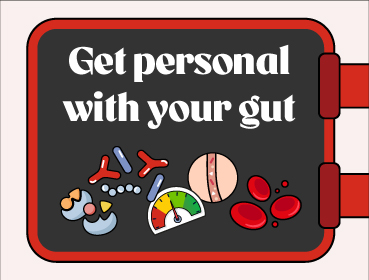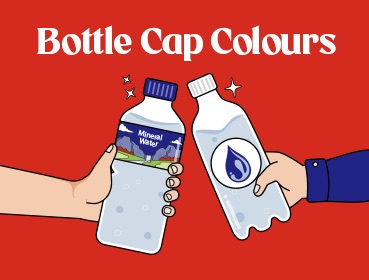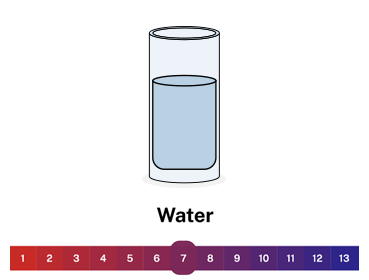Sip safely: Protecting yourself from lead in cups
Discover 10 facts on lead poisoning and why this toxic substance is often found in reusable cups!
Tumblers and reusable water bottles are all the rage in Singapore. From gigantic cups to cute bottles that fit in the smallest of pockets, you’ll find these vessels lining the office pantry and poking out of everyday backpacks.
Packing tumblers or reusable bottles as your everyday travel companion makes sense. It’s an eco-friendly alternative to buying new bottled water to quench your thirst several times a day, minimising landfill plastic waste in the process. Providing you wash your cup diligently, using a tumbler could also be a cleaner and healthier option as you can be sure that the drinking water is uncontaminated. But is it truly that simple?
The risk of lead exposure is an under-explored downside of using a metal-sealed tumbler or water bottle. It’s a risk that many people may not be aware of: Is your water bottle safe, and what do you need to know to minimise the risk of lead exposure? Check out the infographic below for more answers.
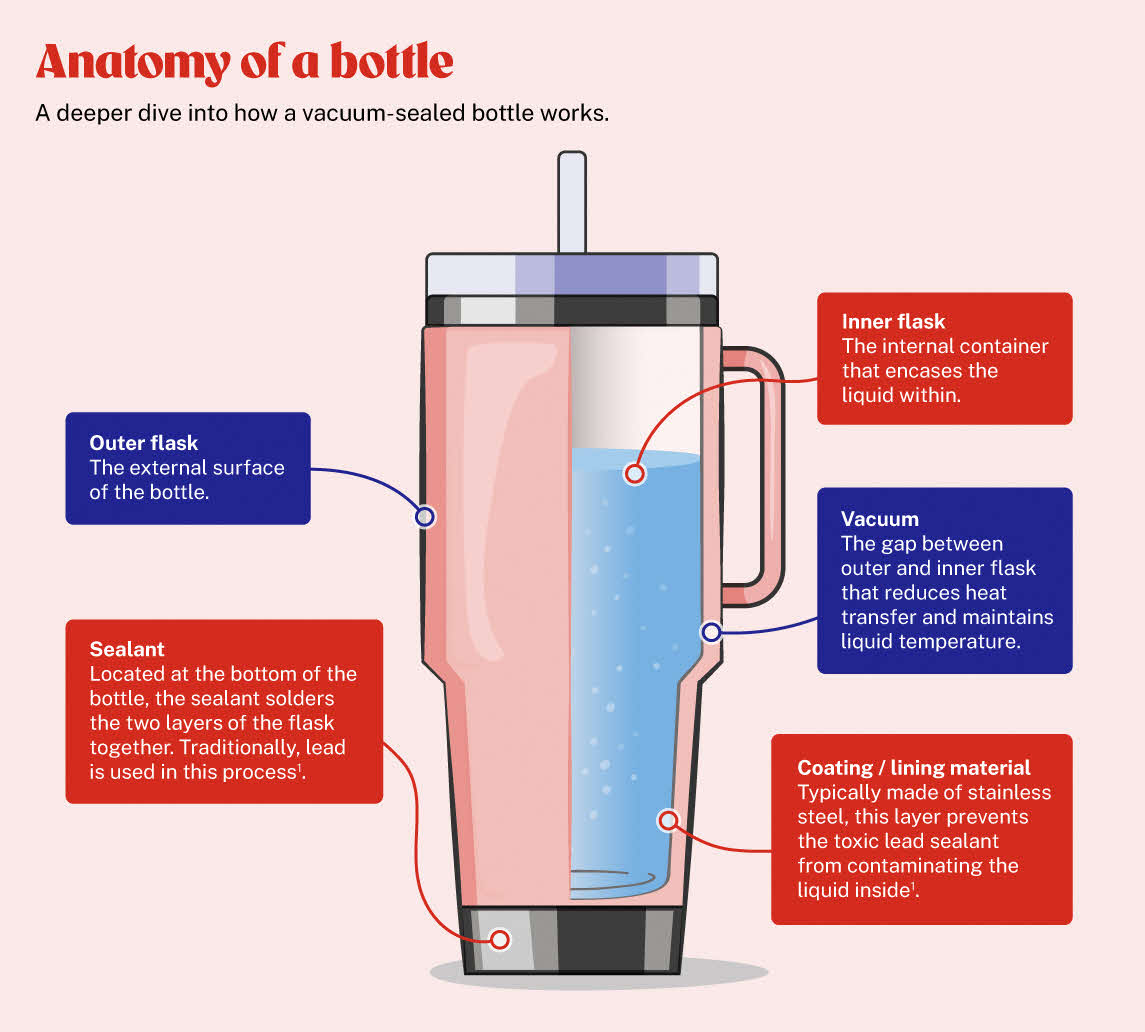
Worried about your lead exposure risk?
Don’t bottle it up! Get the facts here.
Why do some bottles contain lead?
Discover how and why manufacturers use lead to produce reusable drinking bottles1.
Tip:
Wonder why lead is the industry-standard sealing material for drinking cups and bottles? From a manufacturing perspective, lead has one distinct advantage: cost. Working with alternatives like lead-free silica or glass are often costlier and more complex, requiring rounds of performance testing or investing in new ovens2. For this reason, many manufacturers simply fall back on the tried-and-tested option despite potential health risks.
Check the website of the company that manufactures your water bottle for more information on their manufacturing process and the type of sealant they use.
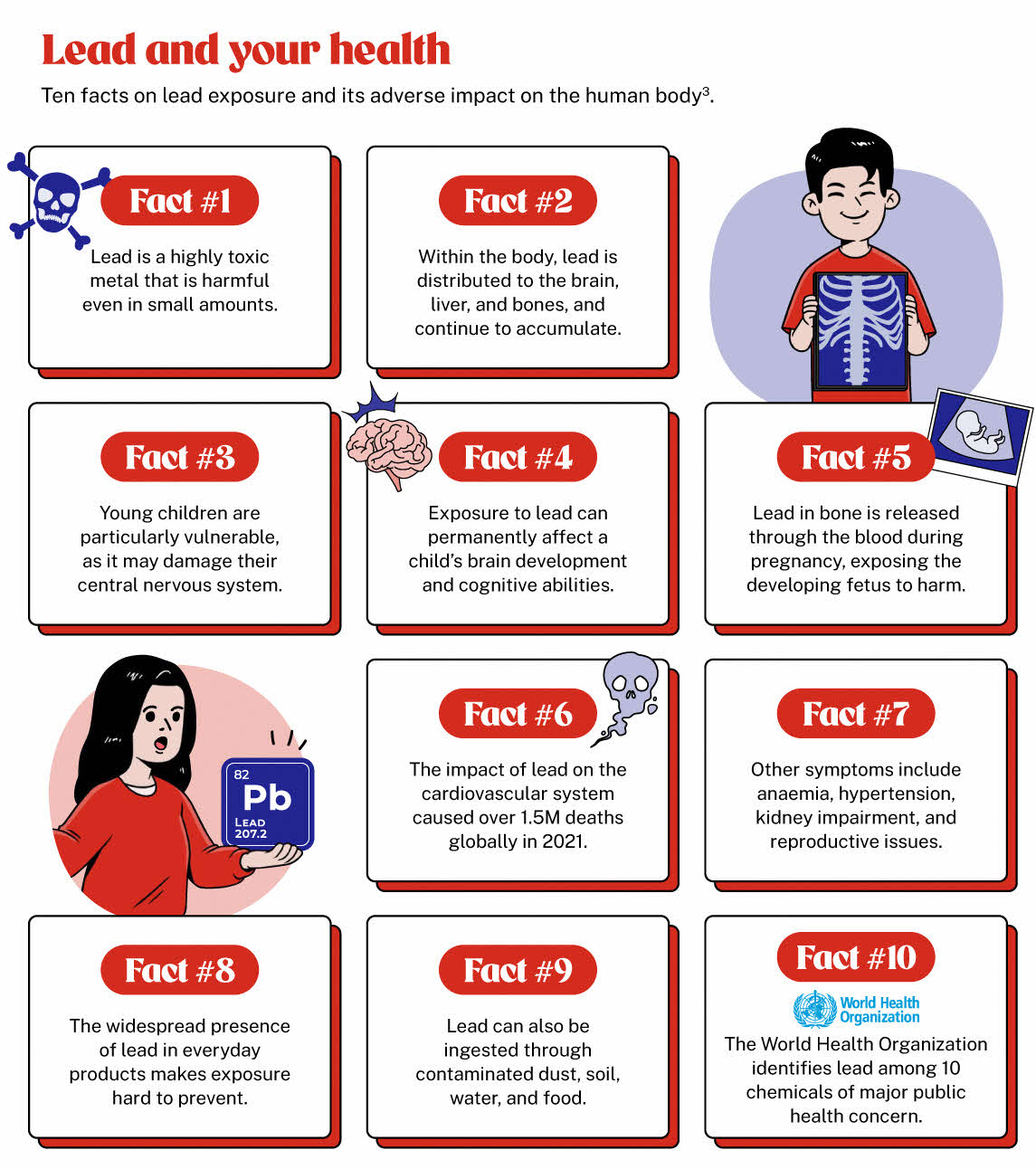
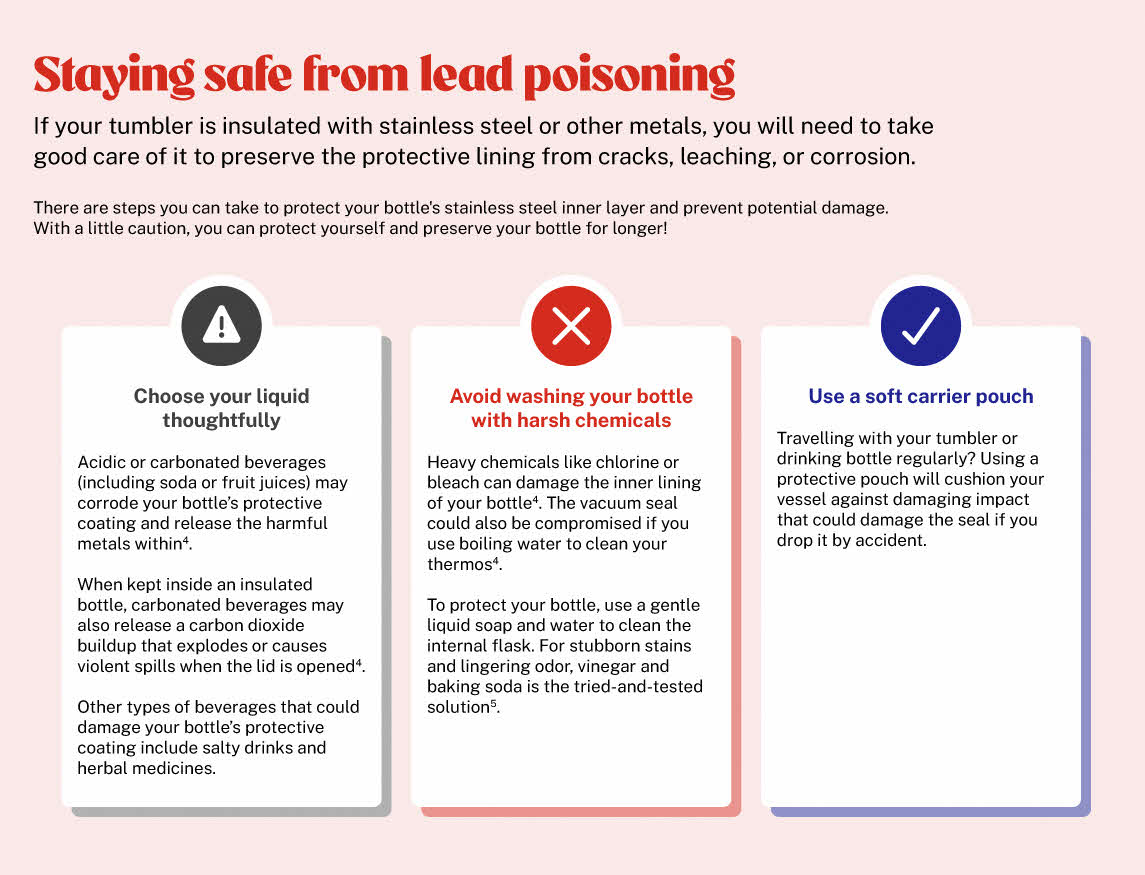
From drinking bottles to dining utensils and bento boxes, the everyday items we use to eat or drink regularly may contain harmful materials we are not aware of, particularly if they are made of plastic or heavy metals6.
To shield yourself and your loved ones against unexpected illnesses posed by toxic substances in your everyday environment, look out for healthcare plans that provide continuous and extensive coverage against critical illnesses. One option you may consider is the GREAT CriticalCover series, which provides 100% lump sum payout upon diagnosis of critical illnesses at any stage and the choice to receive coverage against 53 critical illnesses. To learn more about this plan and other ways to enhance your healthcare coverage, speak to our financial representative today!
Sources:
- https://www.wired.com/story/stanley-cup-lead-soldering
- https://www.vox.com/culture/24059078/lead-stanley-water-bottles-why-safe
- https://www.who.int/news-room/fact-sheets/detail/lead-poisoning-and-health
- https://e.vnexpress.net/news/life/wellness/5-drinks-you-should-not-store-in-a-thermos-4808625.html
- https://www.eatingwell.com/article/7996480/how-to-safely-clean-a-thermos-and-use-it-effectively
- https://www.straitstimes.com/world/europe/more-than-3600-food-packaging-chemicals-found-in-human-bodies
Let us match you with a qualified financial representative
Our financial representative will answer any questions you may have about our products and planning.




